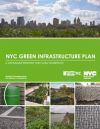FLASHBACK TO 2007: Township of Langley Showcased Green Infrastructure Innovation in Three New Neighbourhoods

The goal in showcasing innovation and celebrating successes was to promote networking, build regional capacity, and move ‘from awareness to action’ – through sharing of green infrastructure approaches, tools, experiences and lessons learned. “After many years of what you would call research, we are now in the developmental phase,” stated Ramin Seifi in 2007 at the Langley event. “We will be monitoring and measuring what matters. This will enable residents and Council to maintain their focus over time.”










